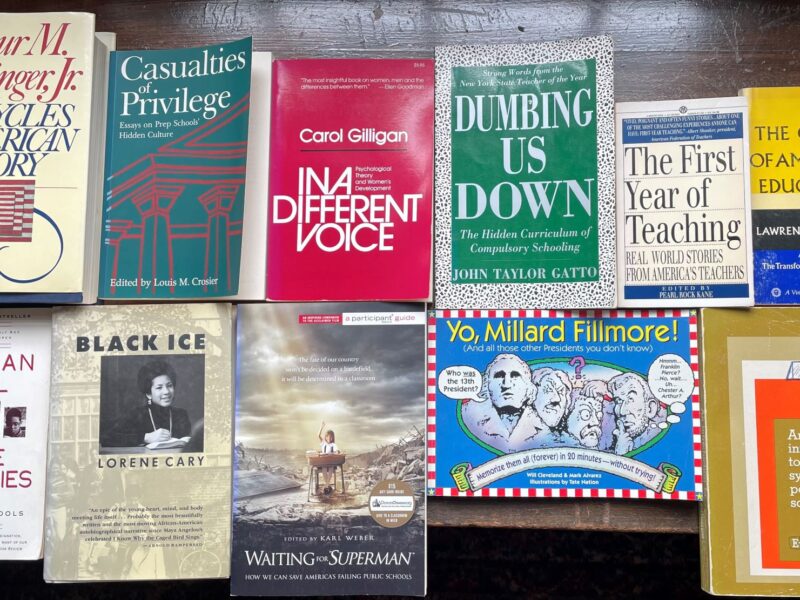
Pay any attention to the news these days and you’ll be bombarded with messages that say:
The. Kids. Are. Bummed.
Here are five examples I encountered in just the last week (3/18-24/24). (Note: Here I’ve included the headlines in bold italics with a single quote from each.)
#1: Today’s youths are “The Anxious Generation”… Boston Globe (3/24/24) by Christine Mehta
“American teens are unhappy. Really unhappy. There’s no shortage of coverage showing that kids of all ages are more depressed, more anxious, lonelier, and more likely to go to the hospital for self-inflicted injuries than teens in any previous decade.”
#2: More Boston high schoolers feeling sad and hopeless, data show… Boston Globe (3/21/24)
“This mental health epidemic that arose in the context of the pandemic has a longer tail of resolution than the pandemic itself. We’re in that period of resolution now.” – Danna Mauch, President & CEO, The Massachusetts Association for Mental Health
#3: Once a model, now in crisis – Brockton High School is beset by disorder and despair. It wasn’t always this way… Boston Globe (3/19/24)
“It shouldn’t be this way. Brockton kids deserve better than they’re getting now.” – Susan Szachowicz, former principal, Brockton (MA) High School
#4: Student fight yields no charges – Nex Benedict, a non-binary teen from Oklahoma, died after the altercation – Portland Press Herald (3/22/24)
“In a statement last week, Benedict’s family called on schools, administrators and lawmakers to come together and push for reforms that seek to end bullying.”
#5: The “Anxious Generation” Review: Apps, Angst and Adolescence” – Wall Street Journal (3/24/24)
In her review of Jonathan Haidt’s new book, The Anxious Generation – How the Great Rewiring of Childhood is Causing an Epidemic of Mental Illness, Meghan Cox Gurdon writes, “In words that chill the parental heart, he [Haidt] writes that giving smartphones to young people en masse constitutes ‘the largest uncontrolled experiment humanity has performed on its own children.’ The experiment has been a disaster.”… In her review, Gurdon echoes Haidt’s characterization of what’s happening as a “complete mutation of childhood from ‘play-based’ to ‘phone-based.'”
Then on Sunday (3/24/24) I surfed my TV over to CNN’s Fareed Zakaria GPS show just in time to hear him announce: “For the past ten to fifteen years, the U. S. has been in the grips of a youth mental health crisis.” Zakaria references the 2021 CDC post-Pandemic national survey of 7,700+ teenagers that found that 42% of high school students experience persistent feelings of sadness and hopelessness. Furthermore, that same year, not only did 30% of all U.S. high school girls seriously consider suicide, 24% actually made a suicide plan.
As might be expected, the exposes of these problems tend to be accompanied by a predictable array of causes — the Pandemic, the cell phone, school-funding issues, etc. — balanced by a familiar group of cures: ban cell phones, increase funding, hire more counselors, earlier start times, etc.
As my educational career approaches its half-century mark, I find that my explanation of the cause has remained constant for decades: We care more about what they can do than about who they are, and they know it. (“They” = the 50M kids attending our schools.)
Similarly, my proposed cure has also been consistent for the same amount of time: Let us value attitude over aptitude, effort over ability, and character over talent.
One thing that has changed: My colleagues and I have created a school culture “unbumming” program accessible to any teacher on-line at the click of a button.
I’ve personally seen it transform that distressing photo at the top of this post and turn it into something that looks a lot like this:

So, if you’re interested in learning more about Moving to Unbummed as you plan for the 2024-25 school year, let’s talk (or email).
Onward, Malcolm Gauld
mgauld@hydediscoveryprocess.org



